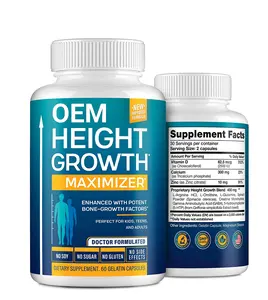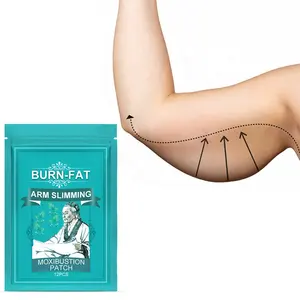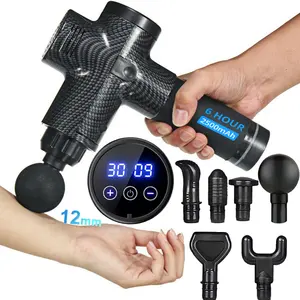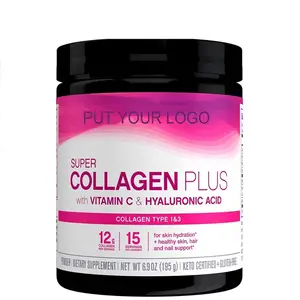आपके उद्योग में लोकप्रिय






FH1961 रबर आउटसोल सामग्री एंटी-स्मैशिंग सुरक्षात्मक जूते सुरक्षा जूते पुरुष

₹1,133.06 - ₹1,474.00
न्यूनतम ऑर्डर: 2 जोड़े



एसएसडी मूल कारखाने हल्के कस्टम डिजाइन आकस्मिक लड़की टॉडल जूते लड़कियों के लिए फैंसी सैंडल
₹228.99 - ₹254.43
न्यूनतम ऑर्डर: 2000 जोड़े







फैशन ट्रेंड सभी मौसमों में आउटडोर टिकाऊ रबर वाटरप्रूफ बच्चों के लिए हैंडल के साथ रेन बूट्स
₹583.49
न्यूनतम ऑर्डर: 1000 जोड़े





अनुकूलन किराए पर लेने की गेंदबाजी जूता गेंदबाजी सामान महिलाओं के जूते
₹1,611.39 - ₹2,544.29
न्यूनतम ऑर्डर: 2 जोड़े







260 मिमी 350 मिमी 400 मिमी पहनने प्रतिरोधी हाइड्रोलिक खनन लौह जूते चेन के साथ
₹593.67 - ₹763.29
न्यूनतम ऑर्डर: 10 नग







पुरुषों के लिए भारत के ओईएम उच्च गुणवत्ता वाले भेड़ के चमड़े के जूते, पुरुषों के लिए ट्रेंड पुरुषों के औपचारिक जूते, सर्वोत्तम गुणवत्ता वाले जूते
₹805.70 - ₹1,301.83
न्यूनतम ऑर्डर: 96 जोड़े





छात्रों के जूते के लिए गद्देदार और नरम इनसोल वाले काले स्कूल जूते पीवीसी जूते सर्वोत्तम गुणवत्ता वाली सामग्री आरएनटी आरयूएफ एन टीयूएफ ब्रांड
₹110.26 - ₹129.76
न्यूनतम ऑर्डर: 48 जोड़े






ऑनलाइन शॉपिंग बिक्री सबसे अच्छा चल जूते उच्च मांग उत्पादों भारत
शिप करने के लिए तैयार
₹292.60 - ₹368.93
न्यूनतम ऑर्डर: 2 जोड़े
शिपिंग प्रति टुकड़ा: ₹1,182.25

ब्राउन चमड़े के जूते Mens सबसे अच्छा गुणवत्ता के लिए साल ड्रेस जूते
₹1,696.20 - ₹2,120.24
न्यूनतम ऑर्डर: 150 जोड़े






OEM ODM के साथ पुरुषों के लिए हॉट सेलिंग 2023 डिज़ाइन सांस लेने योग्य पुरुषों के रनिंग टेनिस वॉकिंग अवकाश खेल जिम जॉगिंग आउटडोर जूते
₹809.94 - ₹1,072.85
न्यूनतम ऑर्डर: 50 इकाइयां






ट्रेंडी स्टाइलिश लवली ग्रे ब्लैक कलर कैज़ुअल स्टाइल पुरुषों के जूते स्ट्रीट वॉकिंग, जिम, यात्रा और काम के लिए चंकी टाइप स्नीकर्स
₹1,781.01 - ₹2,374.67
न्यूनतम ऑर्डर: 500 जोड़े
संबंधित खोजें:
भारत में सर्वश्रेष्ठ जूते की कीमतपीसी में सर्वश्रेष्ठ जूतेपाकिस्तान में सर्वश्रेष्ठ जूतेअमेरिका में सर्वश्रेष्ठ जूतेभारत में सर्वश्रेष्ठ जूते ब्रांड2020 में सर्वश्रेष्ठ जूतेकम कीमत में सबसे अच्छा जूतेअमेरिका में सर्वश्रेष्ठ जूते ब्रांड2017 के सर्वश्रेष्ठ जूते2020 के सर्वश्रेष्ठ जूतेयांगून मायनमार जूतेसुप्रा जूते चीनसस्ते जूते 2.99सर्वश्रेष्ठ जूते भारतग्लेनमोर जूते






अनुकूलित उच्च गुणवत्ता वाले सस्ते चल रहे फुटवियर जॉगिंग एथलेटिक स्नीकर्स आकस्मिक खेल जूते नवीनतम डिजाइनर जूते
₹847.25 - ₹1,412.93
न्यूनतम ऑर्डर: 100 जोड़े






एस्पैड्रिल्स, बैलेरीना, जूते, कैजुअल, कैनवास, ड्रेस जूते टिकाऊ एस्पैड्रिल्स नया फैशन ट्रेंड सबसे ज्यादा बिकने वाली महिला एस्पैड्रिल्स
₹483.42 - ₹508.86
न्यूनतम ऑर्डर: 3000 जोड़े



ब्रिटिश पुरुषों के लिए सर्वश्रेष्ठ ब्लैक ग्रूम बिजनेस सूट, मुलायम सोल वाले ग्रीष्मकालीन कैज़ुअल चमड़े के जूते, पुरुषों के लिए शादी के जूते
₹678.48 - ₹1,017.72
न्यूनतम ऑर्डर: 10 बॉक्स





थोक निर्माण में सर्वाधिक बिकने वाला आरामदायक अनुकूलित हाथ से बना असली लेदर डिज़ाइनर हाई टॉप स्नीकर यूनिसेक्स
₹2,544.29 - ₹3,392.39
न्यूनतम ऑर्डर: 2 नग





चलने के जूते के लिए थोक पुरुषों के कपड़े के जूते सर्वोत्तम गुणवत्ता वाली सामग्री आरएनटी रूफ एन टफ ब्रांड आरएनटी पुरुष कैजुअल 02 जूते निर्माता
₹139.94 - ₹150.12
न्यूनतम ऑर्डर: 48 जोड़े






सभी पु चमड़े के ब्रिटिश शैली स्केट स्केटबोर्ड जूते पुरुषों चलने शैली आरामदायक जूते
शिप करने के लिए तैयार
₹284.12 - ₹360.45
न्यूनतम ऑर्डर: 2 जोड़े
शिपिंग प्रति टुकड़ा: ₹1,183.10





नए फैशन ट्रेंड डिज़ाइन OEM ODM के साथ पुरुषों के लिए सांस लेने योग्य रनिंग टेनिस वॉकिंग अवकाश खेल जिम जॉगिंग आउटडोर जूते
₹809.94 - ₹1,072.85
न्यूनतम ऑर्डर: 50 इकाइयां






असली लेदर बोट शू दो रंग के नए डिज़ाइन के स्लिप ऑन पुरुषों के जूते असली बहुत नरम लेदर सर्वोत्तम गुणवत्ता वाले चमड़े के बोट शूज़
₹720.89 - ₹1,217.02
न्यूनतम ऑर्डर: 96 जोड़े






सबसे अच्छा सामान 2023 साथ स्नीकर्स जूते बिक्री के लिए नवीनतम डिजाइन किए गए आकस्मिक पहनने वाले स्नीकर्स जूते
₹1,781.01 - ₹2,374.67
न्यूनतम ऑर्डर: 960 जोड़े

उच्च टखने पुरुषों चमड़े बूट पार्टी सबसे अच्छा पहनना गुणवत्ता असली लेदर काले
₹2,374.67 - ₹2,968.34
न्यूनतम ऑर्डर: 100 जोड़े

थोक में सर्वाधिक बिकने वाला आरामदायक हल्के वजन का अनुकूलित हाथ से बना असली लेदर डिज़ाइनर हाई टॉप स्नीकर यूनिसेक्स
₹2,544.29 - ₹3,392.39
न्यूनतम ऑर्डर: 2 नग






भव्य द्वारा सबसे अच्छा बेच नवीनतम डिजाइन नरम आरामदायक स्नीकर्स जूते थोक में निर्यात के लिए भारतीय निर्माता आपूर्तिकर्ताओं
₹1,017.72
न्यूनतम ऑर्डर: 120 जोड़े




आरएनटी पुरुष कैजुअल 02 जूते निर्माता थोक पुरुषों के कपड़े के जूते चलने के जूते के लिए सर्वोत्तम गुणवत्ता वाली सामग्री आरएनटी रूफ एन टफ ब्रांड
₹139.94 - ₹150.12
न्यूनतम ऑर्डर: 48 जोड़े






हाई-टॉप स्नीकर्स पुरुषों की शरद ऋतु और सर्दियों के कैजुअल चमड़े के जूते 2024 नए उच्च गुणवत्ता वाले पुरुषों के खेल जूते
शिप करने के लिए तैयार
₹360.45 - ₹419.81
न्यूनतम ऑर्डर: 2 जोड़े
शिपिंग प्रति टुकड़ा: ₹1,182.25






पुरुषों के लिए असली चमड़े के जूते मोकासिन शैली के हस्तनिर्मित लोफ़र सर्वोत्तम गुणवत्ता वाले चमड़े के लोफ़र जूते
₹720.89 - ₹1,217.02
न्यूनतम ऑर्डर: 96 जोड़े






यात्रा, स्ट्रीट वॉकिंग, जिम और काम के लिए काले रंग में हॉट सेलिंग ट्रेंडी डिज़ाइन मिड टॉप स्टाइलिश जूते स्नीकर्स उपलब्ध हैं
₹1,781.01 - ₹2,374.67
न्यूनतम ऑर्डर: 500 जोड़े

थोक निर्माण में सर्वाधिक बिकने वाला आरामदायक अनुकूलित हाथ से बना असली लेदर डिज़ाइनर ट्रेंडी हाई टॉप स्नीकर यूनिसेक्स
₹2,544.29 - ₹3,392.39
न्यूनतम ऑर्डर: 2 नग

सबसे अच्छा बेच चमड़े के जूते प्राकृतिक भारत से शुद्ध जूते औपचारिक आकस्मिक हस्तनिर्मित चमड़े के जूते
₹3,392.39 - ₹3,816.44
न्यूनतम ऑर्डर: 24 जोड़े





आरएनटी स्कूल जूते एंकल 001 छात्रों के जूते के लिए सफेद जूते सर्वोत्तम गुणवत्ता सामग्री आरएनटी रूफ एन टफ ब्रांड
₹110.26 - ₹129.76
न्यूनतम ऑर्डर: 48 जोड़े






असली गाय की खाल के चमड़े के नए डिज़ाइन के स्लिप ऑन जूते असली चमड़े के जूते सर्वोत्तम गुणवत्ता वाले चमड़े के जूते
₹805.70 - ₹1,301.83
न्यूनतम ऑर्डर: 96 जोड़े
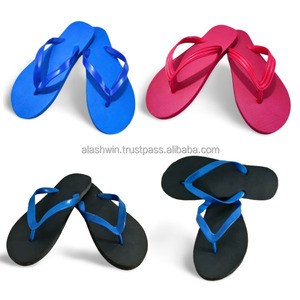
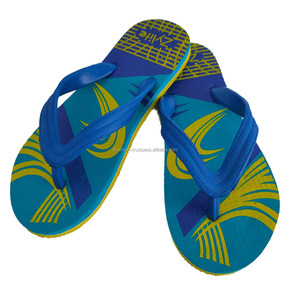

गर्म बिकने वाली मोटी महिला सैंडल, महिला सैंडल जूते, आरामदायक चप्पल, भारत की महिलाओं के लिए सबसे अच्छा पैर पहनने वाला
₹76.33 - ₹97.54
न्यूनतम ऑर्डर: 40 जोड़े





उच्च गुणवत्ता स्नीकर्स Espadrille जूते के लिए नवीनतम 2022 फैशन प्रवृत्ति उपलब्ध में सबसे अच्छा आपूर्तिकर्ता से थोक सस्ते कीमत
₹148.42 - ₹156.90
न्यूनतम ऑर्डर: 3000 जोड़े






सबसे अच्छा गुणवत्ता थोक थोक भारत 90% साफ करने के लिए नई, गुणवत्ता सामग्री इस्तेमाल कपड़े और जूते
शिप करने के लिए तैयार
₹76.33 - ₹135.70
न्यूनतम ऑर्डर: 500 किलोग्राम
शिपिंग प्रति टुकड़ा: ₹145.03






भारत में सबसे ज्यादा बिकने वाला उत्पाद, महिला ब्रांड, स्पोर्ट्स जूते पुरुष बास्केटबॉल जूता
शिप करने के लिए तैयार
₹759.05 - ₹954.11
न्यूनतम ऑर्डर: 2 जोड़े
शिपिंग प्रति टुकड़ा: ₹2,241.52






HISSEN आयातित गांठें आयात करने के लिए भारत में ऑनलाइन ब्रांडेड मैं चाहते हैं जूते और Hzd Jde इस्तेमाल कपड़े
₹18.66 - ₹21.21
न्यूनतम ऑर्डर: 1000 किलोग्राम
भारत में सर्वश्रेष्ठ जूते के बारे में
वे सरल हो सकते हैं, वे रंगीन हो सकते हैं, लेकिन सभी भारत में सर्वश्रेष्ठ जूते। पर अनूठे हैं। बस एक सही खोजने के लिए ब्राउज़ करने के लिए एक अद्भुत संग्रह है। बड़े और बोल्ड या सूक्ष्म और असतत हैं। भले ही वांछित देखो, भारत में सर्वश्रेष्ठ जूते। अच्छी तरह से बना रहे हैं और उचित कीमत है। यह वास्तव में खरीदारों का स्वर्ग है।
भारत में सर्वश्रेष्ठ जूते के पीछे की अवधारणा। सीबीडी को गर्म करना और वाष्प को अंदर लेना है। एक बुनियादी और सरल दृष्टिकोण एक डिस्पोजेबल इकाई है। ये किसी की पसंद के आधार पर सुगंधित तेल से पहले से भरे जा सकते हैं। ये सरल हो सकते हैं, लेकिन उन्हें उबाऊ नहीं होना चाहिए। विक्रेताओं में से कई बड़े पर्याप्त ऑर्डर पर अनुकूलित मुद्रण और पैकेजिंग प्रदान करते हैं। यह रिटेलर और थोक व्यापारी को ब्रांड बनाने की अनुमति देता है क्योंकि वे फिट होते हैं। से चुनने के लिए भी कई रंग हैं।
यह गैर-डिस्पोजेबल भारत में सर्वश्रेष्ठ जूते है। यह काफी सुरुचिपूर्ण और विस्तृत हो सकता है। उनमें से ज्यादातर में रिचार्जेबल बैटरी सिस्टम है। बैटरी सिरेमिक हीटिंग तत्व को शक्ति प्रदान करती है। कुछ के पास वोल्टेज बढ़ाने के लिए एक डायल भी है, जो सीबीडी वाष्प की मात्रा को प्रभावित करता है। जैसा कि व्यावहारिक हो सकता है, यह सजावट है जो हमेशा ध्यान देने योग्य है। वेप लगभग ताश के पत्तों के आकार के होते हैं, इसलिए चित्रों, डिजाइनों और लोगो के लिए बहुत जगह होती है। कल्पना वह सीमा है जो इकाइयों पर मुद्रित की जा सकती है।
भारत में सर्वश्रेष्ठ जूते पर सर्वोत्तम सौदों को खोजने के लिए, बाहर की जाँच करें। चाहे वह डिस्पोजेबल इकाई हो या कुछ समय के लिए रखने के लिए, चुनने के लिए एक विशाल चयन है। उच्च गुणवत्ता वाले उत्पादों और उत्कृष्ट मूल्य निर्धारण के साथ, कोई भी आराम कर सकता है और खुद का आनंद ले सकता है।
भारत में सर्वश्रेष्ठ जूते के पीछे की अवधारणा। सीबीडी को गर्म करना और वाष्प को अंदर लेना है। एक बुनियादी और सरल दृष्टिकोण एक डिस्पोजेबल इकाई है। ये किसी की पसंद के आधार पर सुगंधित तेल से पहले से भरे जा सकते हैं। ये सरल हो सकते हैं, लेकिन उन्हें उबाऊ नहीं होना चाहिए। विक्रेताओं में से कई बड़े पर्याप्त ऑर्डर पर अनुकूलित मुद्रण और पैकेजिंग प्रदान करते हैं। यह रिटेलर और थोक व्यापारी को ब्रांड बनाने की अनुमति देता है क्योंकि वे फिट होते हैं। से चुनने के लिए भी कई रंग हैं।
यह गैर-डिस्पोजेबल भारत में सर्वश्रेष्ठ जूते है। यह काफी सुरुचिपूर्ण और विस्तृत हो सकता है। उनमें से ज्यादातर में रिचार्जेबल बैटरी सिस्टम है। बैटरी सिरेमिक हीटिंग तत्व को शक्ति प्रदान करती है। कुछ के पास वोल्टेज बढ़ाने के लिए एक डायल भी है, जो सीबीडी वाष्प की मात्रा को प्रभावित करता है। जैसा कि व्यावहारिक हो सकता है, यह सजावट है जो हमेशा ध्यान देने योग्य है। वेप लगभग ताश के पत्तों के आकार के होते हैं, इसलिए चित्रों, डिजाइनों और लोगो के लिए बहुत जगह होती है। कल्पना वह सीमा है जो इकाइयों पर मुद्रित की जा सकती है।
भारत में सर्वश्रेष्ठ जूते पर सर्वोत्तम सौदों को खोजने के लिए, बाहर की जाँच करें। चाहे वह डिस्पोजेबल इकाई हो या कुछ समय के लिए रखने के लिए, चुनने के लिए एक विशाल चयन है। उच्च गुणवत्ता वाले उत्पादों और उत्कृष्ट मूल्य निर्धारण के साथ, कोई भी आराम कर सकता है और खुद का आनंद ले सकता है।
